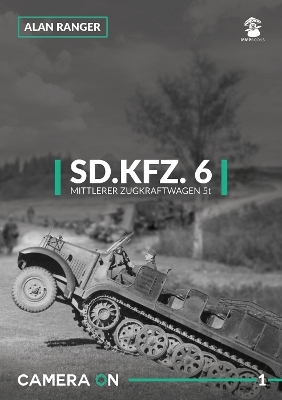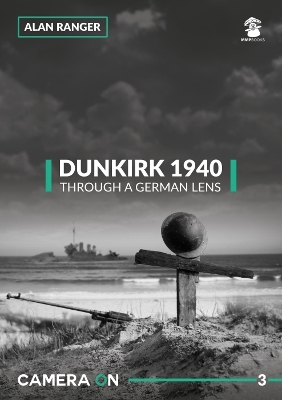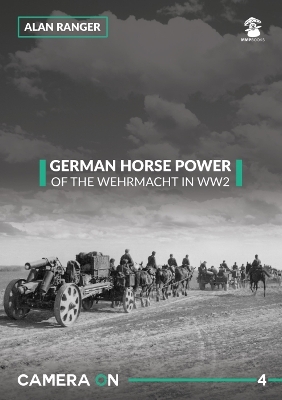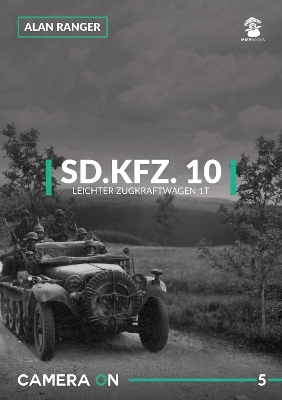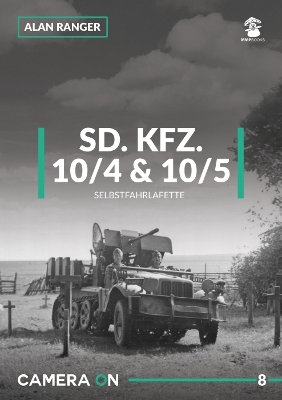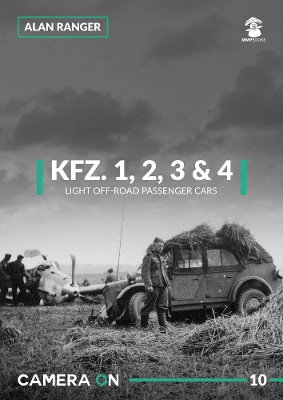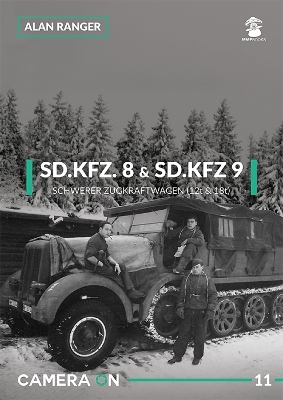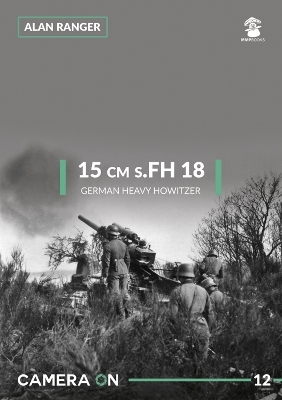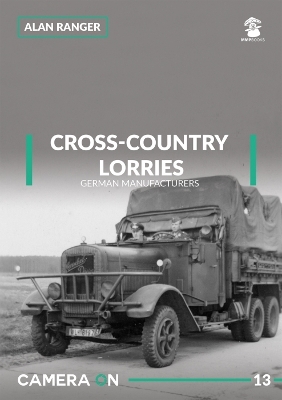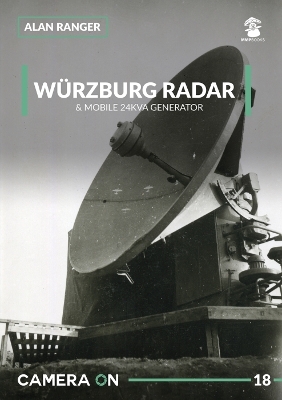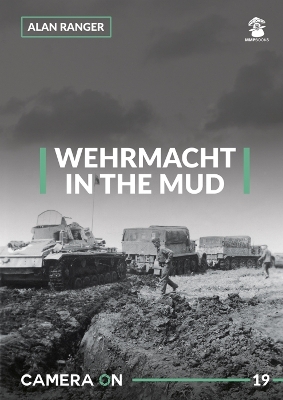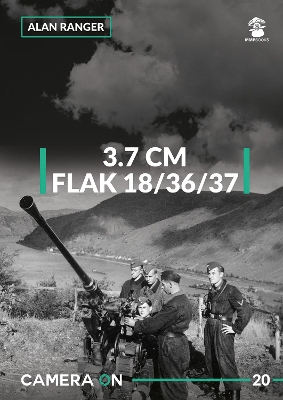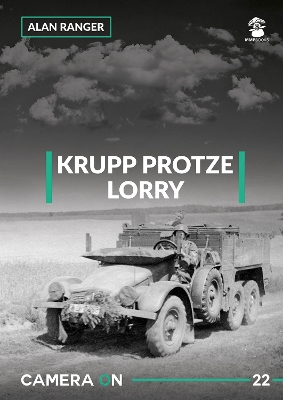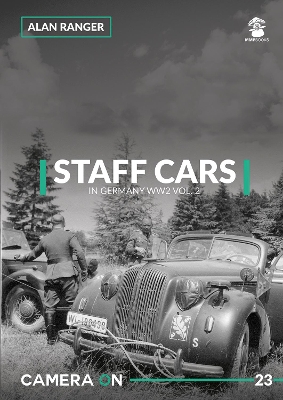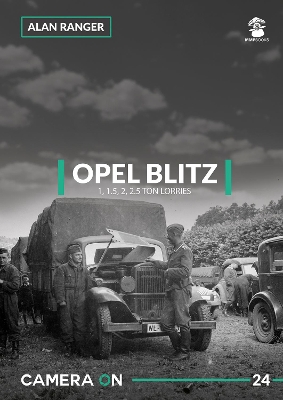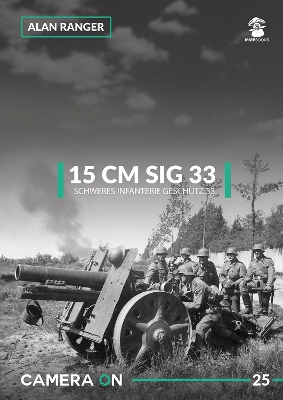Camera on
24 primary works • 25 total works
Book 1
Book 2
Book 3
Book 4
Book 5
Book 7
The Hotchkiss H35 or Char léger modèle 1935 H was a slow but well-armoured light infantry support tank but was rejected by the infantry and instead adopted by the cavalry. From 1938 an improved version was produced with a stronger engine, the Char léger modèle 1935 H modifié 39, which from 1940 was also fitted with more powerful 37 mm gun.
Over 500 Hotchkiss tanks were captured and used by the Germans as Panzerkampfwagen 35H 734(f) or Panzerkampfwagen 39H 735(f), most of them for occupation and assigned to police units or second line logistic support troops.
Book 8
The Selbstfahrlafette (Sd. Kfz. 10/4) fur 2cm Flak 30 and the Selbstfahrlafette (Sd. Kfz. 10/5) fur 2cm Flak 38 were self-propelled Flak halftracks based on the Sd.Kfz 10 one-ton vehicle.
In firing mode, the vehicle had hinged side walls that opened up to enlarge the firing platform at the back and to both sides. Except for armoured shield often fitted to the AA gun these vehicles were unarmoured.
Book 10
The superstructures were delivered by ten different companies and were identical from each manufacturer. Early versions had both 4-wheel drive and steering which later was dropped to just 4 wheel drive and front wheel steering.
These off road cars were used by the German Army in four distinct versions with the designations Kfz. 1, Kfz. 2, Kfz. 3 and Kfz. 4. This new photo-album in the ""Camera On"" series contains over 120 photos of these vehicles during WWII.
Book 11
Sd.Kfz. 8 Schwerer Zugkraftwagen 12t - (heavy 12 ton half-track vehicle) -was a German half-track that saw widespread use in the war. Its main roles were as a prime mover for heavy towed guns such as the 21 cm Moerser 18, the 15 cm Kanone 18 and the 10.5 cm FlaK 38.
Sd.Kfz. 9 Schwerer Zugkraftwagen 18t - (heavy 18 ton half-track vehicle) -was the Germans' heaviest half-track vehicle of any type built during the war years. Its main roles were as a prime mover for very heavy towed guns such as the 24 cm Kanone 3 and as a tank recovery vehicle.
Book 12
The gun was officially introduced into service on 23 May 1935 and by the outbreak of war the Wehrmacht had about 1,353 of these guns in service. Production continued throughout the war, reaching a peak of 2,295 guns in 1944.
This profusely illustrated photo-album includes over 120 previously unseen pictures of this artillery piece in action, many from private sources in Germany.
Book 13
Three companies were involved in the development of these lorries: Bussing, Henschel and Krupp. The first Henschel model - the Henschel type 33 B 1 - was delivered in 1928.
This profusely illustrated photo-album includes over 150 previously unseen pictures of these vehicles in action, many from private sources in Germany.
Book 17
Sd. Kfz. 7, Mittlerer Zugkraftwagen 8t (middle half-track vehicle 8 tons) was designed in 1932 by Krauss Maffei and by 1937, the ultimate Km m 11 model was introduced.
Approximately 13,600 units were produced until production ceased in 1945, including about 200 built under license by BREDA in Italy and even a version by Vauxhall in the UK.
Book 18
This volume endeavours to show this rarely illustrated equipment in some detail but still show it as the soldiers viewed it as both their work place and also their home, not the highly posed and polished views of the official photographers. This collection will be an invaluable reference for historians and military modellers alike.
Book 19
This book contains 140 photographs of German equipment endeavouring to make its way through mud - sometimes with success and sometimes only with help. It shows many of the recovery vehicles in operation and the harsh conditions they had to work in. The images illustrate this battle with the elements as the soldiers viewed it as both their work environment and indeed were they had to live, not in the highly polished and sanitized views of the official photographers.
Book 20
This truly historically significant World War II weapon (along with the other German 37 mm weapons it evolved into) are illustrated in over 160 photographs. Nearly all of the images are from the author's collection that were originally taken by ordinary German soldiers not professional propagandists.
The book shows this rarely illustrated equipment in detail but still shows it as the soldiers viewed it - as both their work place and in some cases also their home - not the highly posed and polished views of the official photographers.
Book 21
In the early 1920s, the "Zusatz von Bologne" which was an amendment to the Treaty of Versailles allowed the German Army to produce armoured cars primarily for policing duties and eventually this gave rise to the military Sd.Kfz.13 series in the early 1930s.
This publication covers German 4-wheeled cars in great photographic detail, focusing on the armoured cars and their crews as they dealt with the conditions and circumstances in which they found themselves. Rare photographs from the author's own collection have been used to illustrate this book; they were taken by ordinary German soldiers not by official army cameramen whose images are already well known to enthusiasts.
Book 22
The Krupp Boxer saw extensive service on all of the operational fronts where the German army was engaged. This book covers the Krupp-Protze in great photographic detail focusing on the trucks and their crews as they dealt with the conditions and circumstances they found themselves in.
Book 23
The remainder of the Opel motor company major production types are covered - the car types that were not covered in volume 1 - such as the Opel P-4 that was also used as the basis of many of the pre-war mock-up training tanks used by the German army due to the lack of real tanks to train with. The "Opel Kadett" (cadet), the Opel Supper 6, the "Opel Kapitan" (Captain) and at the top of the range, the luxurious Opel Admiral. In this volume the author provides a detailed impression of these vehicles through original photographs, taken both during and before the war by the normal German soldiers who both used and served with these now classic automobiles.
Book 24
This book focuses on the light version of the Blitz lorry deployed by the Wehrmacht during World War II: Opel Blitz type 3,5-134 & 3,5-157; Opel Blitz type 2,0-12; Opel Blitz type 2,5-35; Opel Blitz type 5200.
In this volume the author provides a detailed impression of these vehicles through original photographs, taken both during and before the war by the normal German soldiers who both used and served with these now classic lorries.
Book 25
The 15 cm sIG 33 (Schweres Infanterie Geschutz 33, ""Heavy Infantry Gun"") was the largest weapon ever classified as an infantry gun by any nation. Early production models were horse-drawn, with wooden wheels. Later production models had pressed steel wheels, with solid rubber tyres and air brakes for motor towing.
In this volume the author provides a detailed impression of these artillery pieces through original photographs, taken both during and before the war by the normal German soldiers who both used and served with these now classic weapons.
